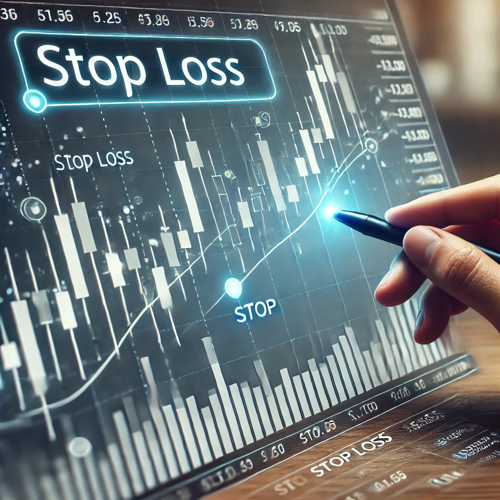
Importance of Stop-Loss Order
The Importance of Stop-Loss Orders and Their Impact on Traders’ Success Strategies. Stop Loss Order in Forex.
Importance of Stop Loss Order: In the world of trading, it is of utmost importance for traders to hedge against the volatility that can occur at any time. This is where Stop-Loss orders, colloquially known as “stop orders” or “stop losses”, are a vital tool to help traders minimize their losses. Stop-Loss is a trading strategy used to protect traders’ capital and prevent potential large losses. On sell trades, it automatically closes the position when a set price level above the current price is reached, while on buy trades, it terminates the trade when a set level below the current price is reached. This allows traders to effectively manage their risks in investment types where there is a possibility of both winning and losing in markets such as the stock market and forex.
Stop-Loss orders help traders to act strategically. By placing a stop-loss order at a certain level, a trader predetermines possible losses and limits their risk. This gives the trader the opportunity to clearly determine the maximum amount to risk when opening a position. Therefore, the trader can act in a more relaxed and planned manner, knowing that the position will be automatically closed when losses reach a certain point. This gives the trader a more disciplined and controlled trading process.
For a trader to be successful, it is not enough to use the right trading tools; they also need to know when and how to use them. This is where Stop-Loss orders come into play and give traders a great advantage. By using Stop-Loss orders, traders can keep their risks under control not only when markets are volatile, but also at any time when trends may change. This strategy helps traders to protect their capital and avoid potential losses, while at the same time increasing the likelihood of regular gains.
The correct use of Stop-Loss orders allows traders not only to limit their potential losses, but also to control their emotional decision-making process. Because acting with predetermined strategic decisions without panicking against instant fluctuations in the market prevents emotional mistakes. This allows the investor to have a more psychologically comfortable investment process and make healthier decisions in the long run.
In conclusion, Stop-Loss orders play a critical role in helping investors achieve their financial goals. It is crucial for every trader to use this important tool correctly to strengthen their strategies and put their investments on a more secure footing. These orders not only limit losses, but also enable investors to act in a more planned, disciplined and conscious manner. Thus, they become the key to both short-term gains and long-term investment success.
Secure Your Investments: Take Stronger Steps with Stop-Loss Orders
Stop-Loss orders are one of the most effective tools traders can use to limit their losses and manage their risks. However, setting these orders at the right levels is a critical factor for traders to follow a successful strategy. Although the Stop-Loss order is used to reduce the probability of loss, setting it at the wrong level can also lead to unexpected results. In particular, placing the stop order too close to your entry price to avoid risking all of your capital and protect your principal can have unintended consequences in some cases.
Sudden market fluctuations or large speculation may cause the price to reach your stop-loss level for a short period of time and your trade may be closed before the potential profit-taking opportunity arises. Therefore, when setting the stop-loss level, it is important to consider the volatility in the market and the movements of currency pairs. For example, setting a wider stop-loss level on a high-volatility currency pair may increase your chances of holding your trade in the face of sudden fluctuations. However, when setting the stop-loss level, it is also extremely important to consider the pip values of the currency pair you are trading and the past performance of that pair.



